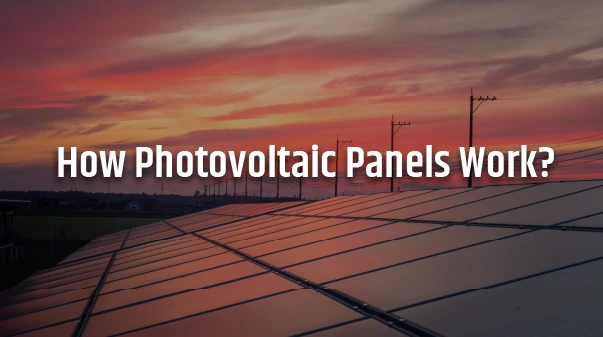What Are Photovoltaic Panels?
- Home
- Blogs

Photovoltaic panels have become one of the revolutionary tools in energy sustainability by changing the way solar energy is collected and consumed. As the world tries to acquire more and more forms of renewable energy, photovoltaic (PV) panels are first in line since they allow us to turn sunlight into clean electricity. In this article, we will discuss the various facets of photovoltaic panels, including how they function and how they work with other solar-assisted devices such as solar inverters, solar pumps, and on-grid and off-grid systems.
Understanding Photovoltaic Panels
Understanding How Solar Photovoltaic Works. Solar energy can be converted into other types of energy through different means, such is the case with the Photovoltaic effect, where photons are emitted to the material semiconductor of the panel, resulting in the movement of electrons, which in turn leads to a forming of electric currents, then this electricity which is in DC format is converted in a solar inverter into AC electricity format. This type of energy is electricity format AC, can be applied on electricity households or battery storage for later use and therefore photovoltaic panels can be relied on as sources of energy.
How Photovoltaic Panels Work
- Efficiency Rate: Based on the kind of equipment used, PV Panels are able to convert an estimated amount of between 15% to 22% of sunlight.
- Flexibility: There are several different places where these panels can be fixed as some of them are mounted on rooftops ground, or are incorporated into building materials.
- Scalability: Another reason as to why these panels are popular is because they are able to be easily expanded in order to cater to the growing energy needs of people.

Key Components in a PV System
A working PV system that is able to capture and utilize solar energy effectively is made of different components, and these includes;
Solar panels: The core of the system which is able to generate electricity was solar radiation through photovoltaic effect.
Inverter: They are used to convert the DC electric current from the solar panel into AC power which can be better used by household appliances.
Battery Storage (optional): They contain energy that wasn’t consumed by the solar panel during bright even hours that might be used overnight or cloudy days.
Monitoring System: These are the systems that help learn the amount of electric energy that was produced and used and help determine how to use it in future.
Mounting Structure: This refers to the set up of the panels in a manner that avails them to maximum sunlight when used as stand alone systems or when incorporated into grid.
Types of PV Systems
Off Grid Solutions: These systems are useful for rural regions or other areas that do not have access to conventional power connections, they function autonomously and frequently have battery storage for additional power reserve on nights and cloudy days.
On Grid Solutions: These systems allow for off grid electricity systems to transfer excess solar energy back into the local grid as credits. Might be reputable for city and suburb systems as well, especially for peple with net metering systems.
Applications of Photovoltaic Panels
Aside from supplying electricity to homes and businesses, solar panels are an integral part of other forms of solar systems like solar watering pumps used in agriculture. Such systems usually include water pumps which are powered by solar energy – and so in essence, such a system provides a dependable and cheaper way of irrigating farmland without the need of conventional energy sources.
In the market solar solutions for large companies are getting to be more common, since they offer efficient energy systems for large businesses. A large number of businesses do yearly maintenance contracts for their solar systems, to keep them working all year round at their full capacity.
Photovoltaic Panels in Lighting Solutions
In the past few years, it has been a race to improve solar technology and as a result, the lighting department was also able to incorporate the use of solar panels into its products. Such solar lighting solutions are commonly found in applications such as street lights, garden lights, and emergency lights that do not need electricity to operate.
The Future of Photovoltaic Panels
Photovoltaics technology is still advancing as we strive toward a cleaner and greener environment. Processes are made to make PV systems more advanced in terms of cost, efficiency, and versatility in application, scaling from domestic and business markets to niche applications such as solar water pumping systems and even lighting.
In conclusion, it can be said that all types of photovoltaic panels are steps in the right direction as they are an essential energy in the future energy market. This is because they have the potential to reduce oil use and therefore can have applications in many industries, making them ideal for all energy requirements. If your interest is more in off grid to on grid solutions, or to commercial buildings, investing in such devices will be a way towards the elimination of a bigger problem in the future.
